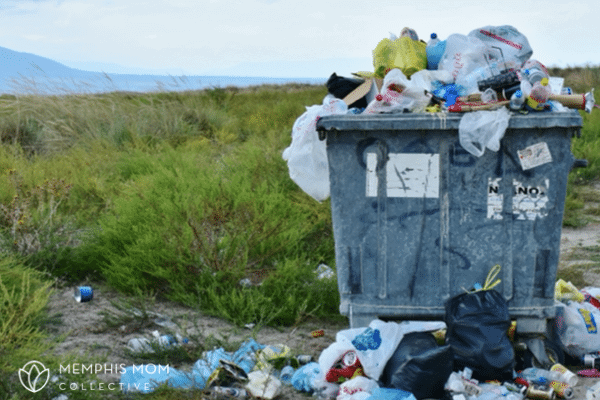Saying “Bye” to Artificial Dye
Red 3. Yellow 5. Blue 1. It may sound like I’m calling some sort of weird Bingo game or identifying players on a soccer field, but these are the ingredients found in many of the foods our kids love and eat on a regular basis. Aside from the obvious culprits like Jolly Ranchers, cotton candy, and Kool-Aid, artificial dyes are used in all kinds of food that you’re feeding your kids, many of which you’d be surprised to learn such as Eggo waffles, Kraft macaroni and cheese, fruit yogurt, pickles, Lunchables….even most toothpastes!
While other countries, like the United Kingdom, have demanded that large companies like Kraft remove these artificial colors and replace them with natural additives, consumers in the United States have lagged woefully behind on this front. Americans seem uneducated, if not uninterested, in the ingredients in their food and until we demand better, it’s unlikely any major changes will occur.
Let me start by saying that I am not some organic-eating, patchouli-wearing, Kumbaya-singing tree hugger. I’m just a mom that was tearing her hair out a few years ago trying to figure out how to help my son, who seemed unnaturally impulsive (even for a four-year-old) and alarmingly hyperactive. I wasn’t ready to seek out a diagnosis or consider medication for a child so young, but I also couldn’t stand for it to continue much longer. I began reading online about how the artificial dyes in our foods can cause behavior in children that mimics ADHD and worsen that of those who already suffer from it. Article after article cited studies done to support these claims, and while I still wasn’t convinced, I wondered what it would hurt to see for myself.
While my four-year-old son napped upstairs one afternoon, I ransacked the pantry, poring over the ingredients in every item and removing anything that listed any artificial colors. I was shocked to learn that some of the foods I thought were “healthy” were actually loaded with synthetic dyes….Nutri-Grain bars, Life Cereal, and Welch’s Fruit Snacks, just to name a few.
The next day I ventured to the grocery store in an attempt to purchase replacements for the food I threw out. I spent more than an hour in the store reading ingredients, comparing labels, and scanning aisles, yet I found it surprisingly easy to find alternatives that I thought my son would like. Yes, sometimes it meant buying an organic brand, like Nature’s Path toaster pastries instead of Kellogg’s Pop-Tarts or Annie’s Mac and Cheese rather than Kraft. But more often than not, I am able to buy foods made by the national brands just by being more selective with what I choose to offer my kids in general. For example, I give the kids Cheetos Naturals instead of the ones with that are bright orange. I have switched to graham crackers and Nilla Wafers instead of favorites like Oreos. I buy Capri Suns rather than Hi-C or Kool-Aid. I offer my son the clear Gatorade versus the bright red one after a sports game. Betty Crocker even makes a fruit roll-up that uses fruit and vegetable dyes for color, and I opt for chocolate candy like Hershey’s Kisses instead of Skittles and Sour Patch Kids for the occasional after-dinner treat.
These choices I make are not hard, but they are deliberate. I have to think before I buy and I have to weigh the consequences against the benefits on a regular basis. But I’m not a fanatic about it either. If my son goes to a birthday party, I don’t sweat it. I let him have that cupcake with the blue icing and the rainbow sprinkles. If I’m making it though, you bet I’m opting for the chocolate or white cake mix instead of the yellow (which uses yellow #5) and I’m definitely making my own frosting, which is yummier anyway. I’ve even found some bottles of food coloring by India Tree with natural dyes that I can use to make those princess pink cookies or camo-green cupcakes. It’s a win-win.
My son is school-age now and still struggles with impulsivity and hyperactivity at times. But I’ve absolutely noticed that it is exponentially worse when he’s ingested artificial dyes. He doesn’t seem to miss them at all, and I like that as a family, by choosing natural alternatives, we could be reducing our risk of things like cancer, allergies, asthma, and all sorts of unknown ailments. For me, it’s an easy decision. We said “bye” to artificial food dyes, and we’ve never looked back.











I could have written this article myself. This is me exact approach to artificial food dyes.
Thank you for helping to bring more awareness to this! While pregnant with my second child, I had an extreme reaction to yellow #5. I had panic attacks, insomnia, hyperactivity, inability to focus, just to name a few. It was so bad I was not able to care for my toddler and my mother had to come stay with me. The doctors had no idea what was wrong with me and talked about putting me in anti-anxiety meds. It was my mom who suggested that I might be having a dye issue as she had hives from dyes after my sister was born. It took awhile to find all the products in my life with dyes in them, make up, lotions, shampoo, laundry detergent, etc. Luckily I stopped reacting to it after I delivered. We still try to avoid dyes but we aren’t super strict about it anymore. I share my story in case there are others who are having reactions but don’t know that this could be a cause.
I went artificial-dye-free a few years ago, too. Thanks so much for pointing me to India Tree food coloring! I had been making only chocolate or white things, this will be so much fun.
thanks for the inspiring post! I’m going to do a purge and cleanse of our kid food this week. i tend to buy organic whenever i can anyway but always good to take some inspiration and make the foods we give our kids a bit better for them!